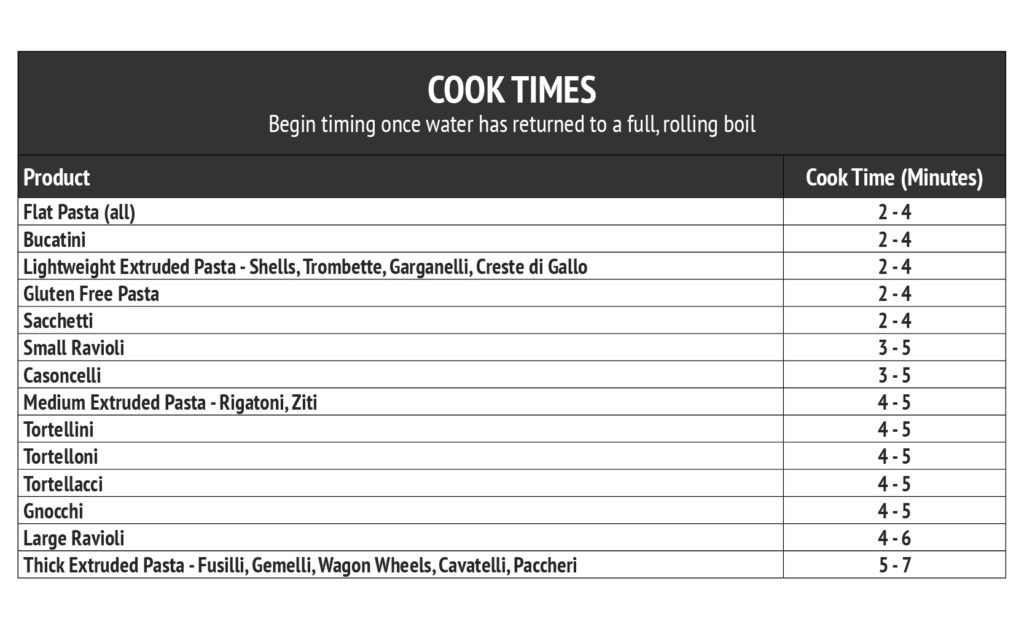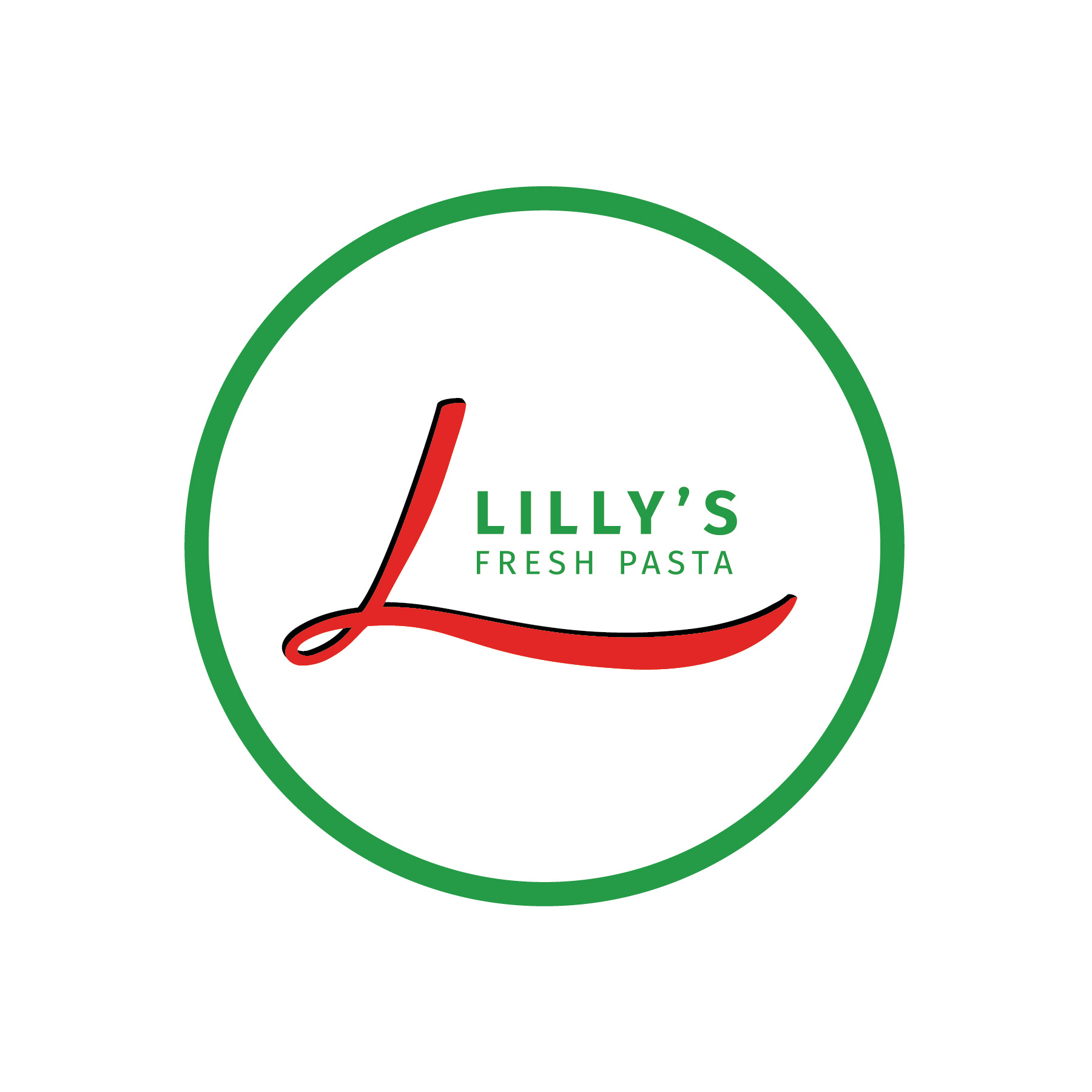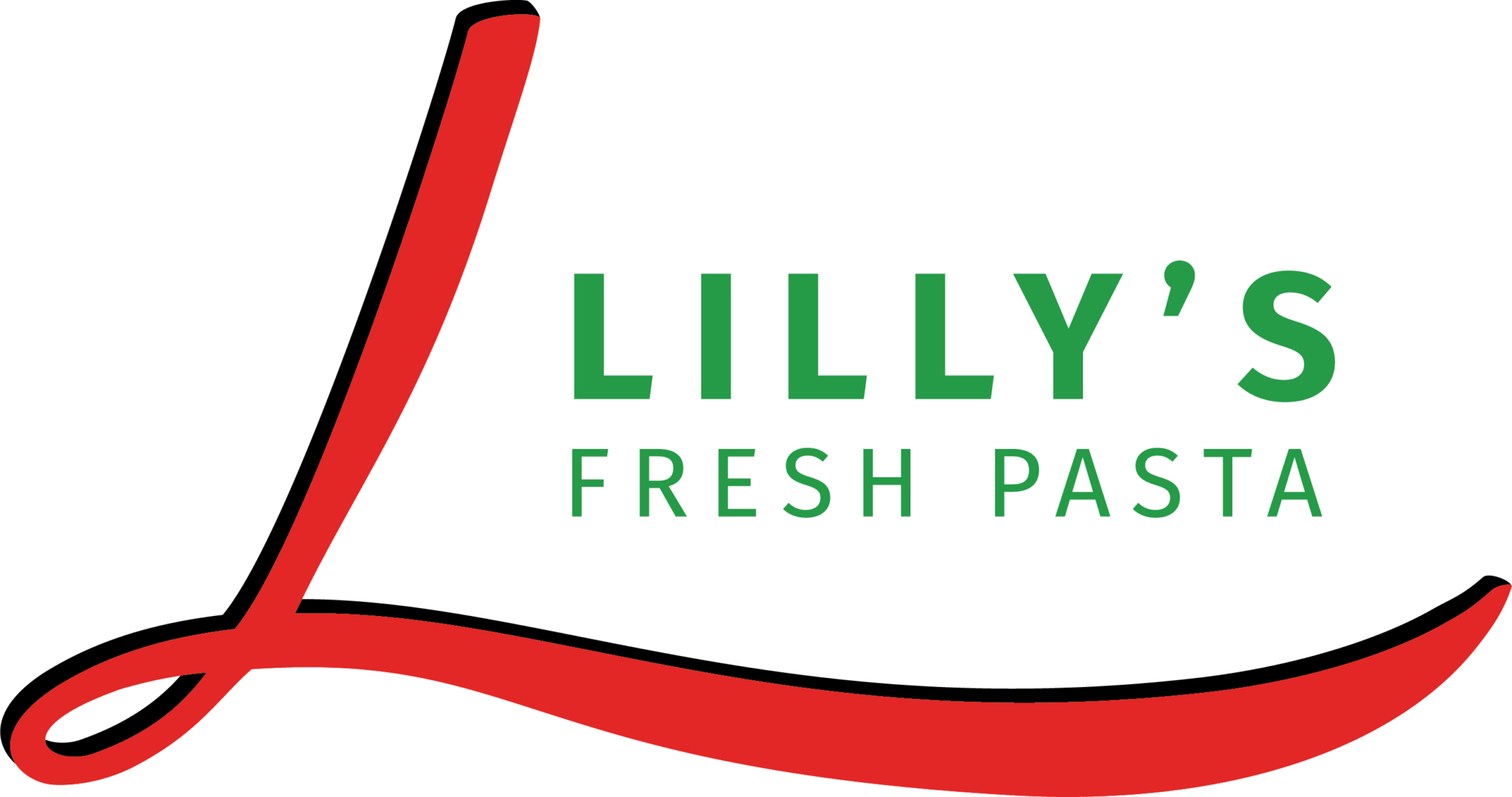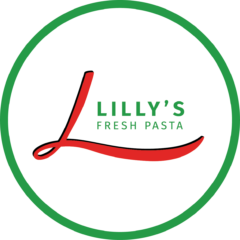Storing and Cooking Fresh Frozen Pasta
We’re not all lucky enough to live next door to Mama Lilly, so over the years, we’ve developed the perfect way to share her artisanal fresh pasta with the world without sacrificing quality: distributing it frozen at the peak of freshness!
Buying pasta for your restaurant fresh-frozen has amazing benefits. Fresh-frozen pasta has a longer shelf life, naturally – up to 12 months. Since you’re not tied to a nearby location or produce house, you get access to a wider variety of unique cuts and flavors. And, once fresh-frozen pasta is thawed properly, it may as well have come right out of a pasta machine!
Proper storage, handling, and cooking is very important to get the most out of your fresh-frozen pasta:
Handling Fresh Pasta
Fresh-frozen pasta MUST thaw for 24 hours under refrigeration before ANY attempt to portion it out!**
This is the “golden rule” of fresh-frozen pasta! If you’re too rough with the pasta while it is still frozen, it will break into pieces and be unusable. This is especially true with long, flat cuts like Pappardelle.
To thaw fresh-frozen pasta, leave it in the refrigerator in its original box for 24 hours.
Once thawed, fresh pasta has a shelf life of 16 to 21 days.
**IMPORTANT – Thawing instructions ONLY apply to fresh-frozen Flat and Extruded pasta (ie Linguine, Ziti, etc.). Do NOT thaw frozen filled pasta such as Ravioli or Tortellini – these should be cooked directly from a frozen state. Click here to view cooking and handling instructions for our whole line.
Cooking Fresh Pasta
Now the fun part – cooking delicious fresh pasta recipes!
Cooking fresh pasta is fast and simple:
- Bring 6 quarts of water and 1 tbsp. salt per pound of pasta to a rolling boil.
- Remove pasta from bag; fluff pasta to separate and shake off any excess flour.
- Drop pasta into water and swirl gently with tongs to separate noodles; return to a boil.
- Maintaining a rolling boil, cook pasta for designated time (see Cook Times chart below)
- Drain, DO NOT RINSE, toss with sauce (if desired) and serve immediately.

A few of our key pro-tips for cooking fresh pasta:
- Make sure the water is at a strong, rolling boil; if it cools to a simmer when you put the pasta in, wait for it to return to a full boil before you start keeping time.
- As a reminder – NEVER thaw fresh-frozen filled pasta like ravioli! It should be cooked directly from frozen (one less prep step!)
- For maximum flavor, cook your pasta to just shy of al dente and then finish cooking it by sautéing in the sauce it will be served in.
- Don’t toss fresh pasta with oil! Fresh pasta has a porous, rustic texture that absorbs flavors perfectly, but oil will coat that porous surface and cause your sauce to slide right off. Unless of course, the oil IS the sauce – in which case, toss to your heart’s content.
- Pasta water = liquid gold! Always save a cup or two of your pasta cooking water; it’s perfect for loosening up the sauce you’re cooking and making it extra smooth and velvety while adding salt, starch, and body.
Do you have a secret pasta cooking hack?
Let us know, and we may feature you on our social media or our next post!
If you’re ready to elevate your menu, try Lilly’s Fresh Pasta today.
Grazie,
The Lilly’s Fresh Pasta Family



